2013 Ford Focus ST Vs 2013 Mazdaspeed3

Hot hatches have been, for the most part, conspicuously absent from the North American market. Sure, VW has been kind enough to share the GTI with us, but compared to the European market we’ve had pretty slim pickings when it comes to front-drive hatchbacks with bold styling and the performance to match.
FAST FACTS
| 1. The 2.0L Ecoboost engine makes 252 hp and hits its 270 lb-ft torque peak at just 2500 rpm. |
| 2. 0-60 mph in just 5.9 seconds. |
| 3. Wears 235/40R18 Goodyear Eagle Asymmetric 2 UHP summer tires. |
Mazda did their best to put an end to that in 2007 though, blessing us with the first generation Mazdaspeed3 and then, in 2010, turning up the aggression with the even shoutier version in production today. One of the most powerful wrong-wheel drive cars ever offered to an American audience, we certainly found its 263-hp 2.3-liter turbocharged 4-banger to be plenty potent in a head-to-head matchup against the 2012 Honda Civic Si last year.
Get a Quote on a New Honda Civic or Mazda3You wouldn’t know it based on their North American hatchback history, which has at best been lukewarm, but Ford has a long history of building some of the hottest hatches in Europe. Take the utterly bonkers 2011 Focus RS500, for example, a matte black and fender flared 350-hp beast that was only available in select European markets. But now, thanks to Ford’s world-market approach, we’ve finally been treated to a truly hot hatch for the domestic market, the 2013 Focus ST.
FAST FACTS
| 1. 2.3-liter engine makes 263 hp and a whopping 280 lb-ft of torque at 3000 rpm. |
| 2. 0-60 mph in 6.5 seconds (boost is limited in the first two gears.) |
| 3. Wears 225/40R18 Dunlop SP Sport 2050 UHP summer tires. |
It may not be as over-the-top as the RS500, but with a 252-hp 2.0-liter Ecoboost engine, sophisticated European design inside and out, and some surprisingly advanced electronics controlling power delivery, it would certainly appear that the Focus ST is a very serious contender for the title of America’s hottest hatch. But is it enough to overcome the Mazdaspeed3’s stump-pulling 280 lb-ft of torque and highly effective Torsen limited slip differential? We headed to our local test track to find out.
BOTH SPICY, BUT DIFFERENT FLAVORS
One of the more intriguing aspects of this head-to-head battle for the American hot hatch crown is the fact that the ST and MS3 share the same chassis. So the temptation is to think that these are very similar machines, distinguished more by their interior and exterior styling than the oily bits underneath.
But the truth is there’s surprisingly few parts shared between these two spicy hatchbacks, and the approach each manufacturer has taken to injecting extra hot sauce has resulted in two very different driving experiences. The most obvious difference is under the hood, where the Mazda uses a refined version of the 2.3-liter MZR turbocharged engine used in the first generation MS3. This gives it 11 hp and 10 lb-ft more than the 2.0-liter Ecoboost turbocharged engine Ford has equipped the ST with, but the Focus hits its torque peak 500 rpm earlier than the Mazda.
Out on the race track, the way the two cars deliver their power couldn’t be more different. The Mazdaspeed3 feels kind of turbo-old-school, boost pressure building slowly until all of a sudden it punches you in the face with a big wallop of torque from 3000 to 6000 rpm. And then at around 6500 rpm it falls flat on its face, so there’s really no point in revving it out to its 7400 limit.
The Focus ST’s engine, on the other hand, pulls strongly across its entire rev range, feeling more like a naturally aspirated engine than a turbocharged one. There’s no big surge of mid-range power, just a wonderful intake noise to go along with the sensation that this little 2.0-liter mill loves to rev. It doesn’t feel as quirky as the Mazda when you stomp on the gas, but it does feel like it’s making more horsepower up top. If my butt dyno is as finely-tuned as I tell my wife it is, I would even go so far as to suggest that the ST’s engine is significantly under-rated at 252 hp.
OLD SCHOOL VS NEW SCHOOL
The Mazdaspeed3 is also more traditional – some would even say old school – with respect to its suspension tuning and traction management. Equipped with high quality shock absorbers, the MS3 has a real sense of solidity on the road, plus you can ride the rumble strips and curbs around the race track without upsetting its chassis.
But it’s also got a fair bit of understeer when you start to push it in the corners, as you might expect from a front-drive machine with this much power on tap. You can induce some rotation with aggressive trail braking or a touch of mid-corner left foot braking, but its overall bias is towards understeer and plenty of it. This can make it challenging to carry speed out of the corners, since it’s often scrubbing off precious forward momentum with its front tires.
Mazda’s also taken a more traditional route when it comes to putting power to the pavement, by equipping the MS3 with a Torsen (gear-type) limited slip differential. This mechanical device has a very positive and consistent feel to it as you squeeze down on the go-pedal coming out of corners. This unquestionably helps the front tires put the Speed3’s mountain of torque to the ground, but it doesn’t do enough to neutralize understeer. As a result, I often felt like I had to use more steering angle and front tire slip angle than the arc of the corner should require, and that’s never a recipe for speed.
In the Focus ST, the cornering experience was impressively neutral for a front-wheel drive machine, but the way it achieves its handling balance is also a bit perplexing. Part of the Focus’s inherent goodness in the corners stems from its superior 60/40 weight distribution (compared to the MS3’s 62/38%), plus the ST’s wider front track (61.2’’ vs 60.4’’) and more aggressive front/rear track width stagger (0.8’’ wider up front on the ST vs 0.4’’ wider front on the MS3) are both subtle but effective ways of increasing front grip and dialing out some understeer. The Focus ST also has wider tires than the Mazda (235/40R18 Goodyear Eagle F1 Asymmetric 2 UHP summer tires vs 225/40R18 Dunlop SP Sport 2050 UHP summer tires), giving the Ford a bit of a mechanical grip advantage as well.
On the downside, the ST felt more lightly damped and sprung than the MS3, the shocks getting onto the bump stops when riding the apex curbing at the track. This tended to unsettle the Focus and kill apex speed. But once I started using a less aggressive line, the ST really started to shine in the corners, showing an amazing willingness to rotate and oversteer. This allowed for a much more aggressive approach to corner entry, and also resulted in really enjoyable 4-wheel drifts.
But here’s the puzzling thing. The ST’s rotation and transition to oversteer had a slightly artificial feel to it, as if the rotation was being induced not by spring rates, sway bar rates, and damper rates, but by some clever electronic intervention at all four wheels. This sense of artificiality stemmed not only from the electronic (non-mechanical) limited slip differential Ford’s engineers opted to use across the front axle, but also some torque vectoring and other digital magic across the rear axle. So although I had traction and stability control systems turned off, there’s still some noticeable computer involvement that I find distracting while turning hot laps.
From the driver’s seat it felt to me like the ST was doing some trail braking for me, but what was really going on was some clever intervention by a couple of pieces of computer code Ford calls Enhanced Torque Vectoring Control and Cornering Under Steer Control. These systems work together to combat understeer and encourage some oversteer by applying a bit of inside rear brake pressure to get the tail end to swing around. If the computers then detect that the tail end is getting too far out of line with the front, it will counteract this by applying some outside rear brake pressure. And at the same time, the electronic limited slip differential is using torque vectoring to limit inside tire slip in an attempt to maximum front traction, plus the electronic steering system is controlling torque steer to some extent too.
IS HIGH-TECH FASTER? YUP!
It’s all a very high-tech dance and one Ford’s engineers have choreographed with impressive precision, especially when you consider that the Focus ST posted a best lap time of 1-minute 24.499-seconds around our test track, by far the fastest time we’ve recorded in a front-wheel drive car. Prior to this comparo, the best FWD lap time we had on record was in a 2012 Mazdaspeed3 with a 1:26.4, a time we bettered by 0.4-seconds this year in the 2013 Mazdaspeed3.
When looking at the in-car data, it wasn’t too surprising to see that the Focus ST won the lap time battle with superior cornering speeds and significantly higher cornering g-forces. This was especially evident in the second half of the corners (from apex to corner exit), since the Ford was able to stay on a tighter line by virtue of its neutral handling balance, making it possible to get back on the gas much earlier. In the Mazda it was always a struggle to stay on the racing line because of the unrelenting understeer, which meant I couldn’t transition back to the gas as soon or as aggressively.
The Mazdaspeed’s narrower powerband also meant that coming out of corners it was sometimes caught out of breath. The Focus ST, on the other hand, always felt willing to pull you out of corners with the same level of urgency, regardless of gear or engine speed. About the only time I felt the Ford fall flat on its face was during a big four-wheel slide through Turn 6 onto the middle straightaway. I’m not sure if my left-foot braking technique (where I apply the brakes and throttle simultaneously) confused the supercomputers enough that it opted to go into “fail safe” mode as a defense mechanism, or if the big spike in lateral g-forces caused fuel starvation as the gas sloshed away from the in-tank pickup, but for whatever reason the ST’s engine hesitated badly until the slide was over. This did seem to be a one-time hiccup, though, so lets just call it a case of over-exuberant driving and leave it at that.
IS HIGH TECH MORE FUN? YES AND NO.
It’s really a little indecent of me to complain about the Focus ST’s performance given its astounding pace around the race track (just 1.5-seconds slower than a Mitsubishi Evolution X we tested last Fall), and yet there was something about all the high-tech torque vectoring that left me feeling a bit disconnected from the driving experience. I know, I know, if that’s what it takes to make a FWD hot hatch rotate and oversteer so willingly maybe it’s the lesser evil, but there are purists out there who may feel cheated by not having to induce that oversteer themselves.
Compare Specs
| Vehicle | 2013 Ford Focus ST | Advantage | 2013 Mazdaspeed3 |
|---|---|---|---|
| Engine | 2.0L 4-Cylinder Turbo | - | 2.3L 4-Cylinder Turbo |
| Horsepower | 252 hp | Mazdaspeed3 | 263 hp |
| Max. Torque | 270 lb-ft | Mazdaspeed3 | 280 lb-ft |
| Fuel Economy | 23 MPG city / 32 MPG hwy | Focus ST | 18 MPG city / 25 MPG hwy |
| Weight | 3,196 lbs | Focus ST | 3,223 lbs |
| Weight to Power Ratio | 12.7 lbs/hp | Mazdaspeed3 | 12.3 lbs/hp |
| Weight Distribution | 60/40 | Focus ST | 62/38 |
| Max Lateral G-Force | 1.17 G | Focus ST | 1.13 G |
| Recorded Top Speed | 100.3 mph | Focus ST | 97.9 mph |
| Starting Price | $24,495 | Focus ST | $24,995 |
| Lap Time | 1:24.499 | Focus ST | 1:26.036 |
I’ve never really considered myself a purist, and yet here I am, complaining (albeit a bit sheepishly) about the way the Focus ST achieves its remarkable handling balance and quietly admiring the less sophisticated yet somehow more exciting way the Mazdaspeed delivers its power. For me there’s something appealingly primal about the way the Speed3 snaps your head back once the turbo spools up, plus its in-your-face styling has a boy-racer quality to it that adds to the overall sensation that you’re driving a hot-under-the-collar hatchback that’s dying to lay waste to its front tires. It’s an unrefined hooligan compared to the Focus, but it’s a personality I find engaging.
THE VERDICT
There’s no stopping progress, though, and there’s really no denying that the 2013 Ford Focus ST is the new king of hot hatches. It was significantly faster than the Mazda around our test track, it has a more modern and refined interior, and its styling has a subtle European flare. And it does make you smile with its surprising ability to hang the tail out in a totally controllable way, even if that control is thanks to the onboard supercomputers and not necessarily the driver.
2013 Mazdaspeed3, 2013 Ford Focus ST
LOVE IT
- In-your-face styling
- Giant wallop of mid-range power adds drama
- Mechanical LSD is consistent, communicative
- Responsive engine, broad powerband
- Unsurpassed FWD handling dynamics
- Quick steering rack makes for easy countersteering
LEAVE IT
- Suddenly runs out of puff above 6500 rpm
- Understeer is omnipresent
- Lack of braking feel and feedback at the limit
- Slight sensation that the computers are in control
- Heavily bolstered seats look fabulous but pinched me in all the wrong places
- Electronic limited slip provides no driver feedback

Some say he's closely related to Bigfoot and that he's a former Canadian Touring Car Champion. All we know is he's the AutoGuide Stig! A thesis defense away from being your intellectual superior he's a professor of vehicle handling dynamics. The part-time touring car and time attack racer is faster (much faster) than your average auto journalist.
More by Dave Pratte
















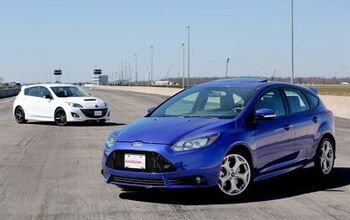
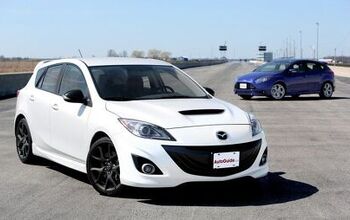







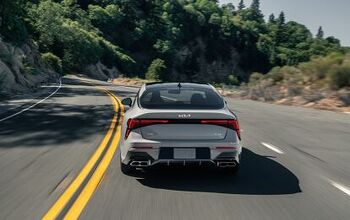
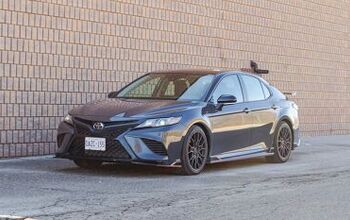
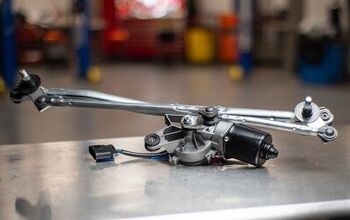

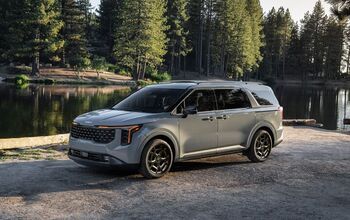

Comments
Join the conversation